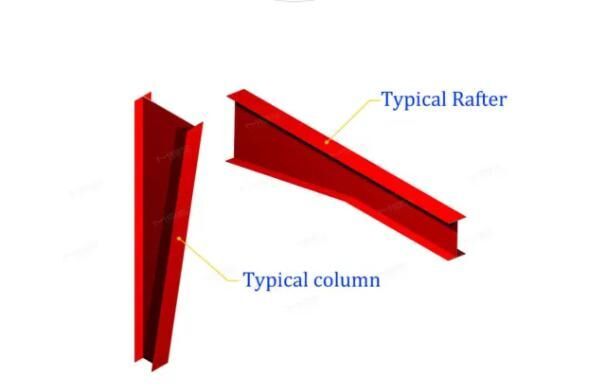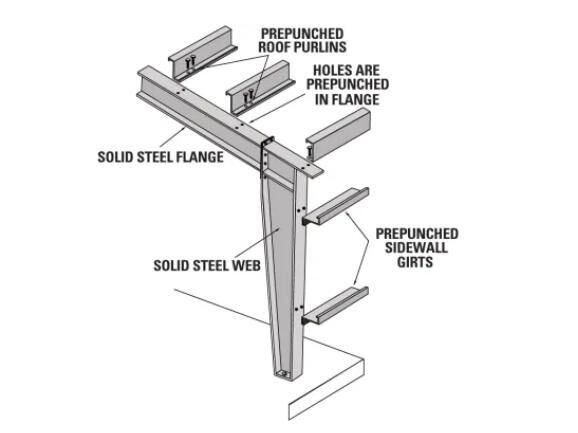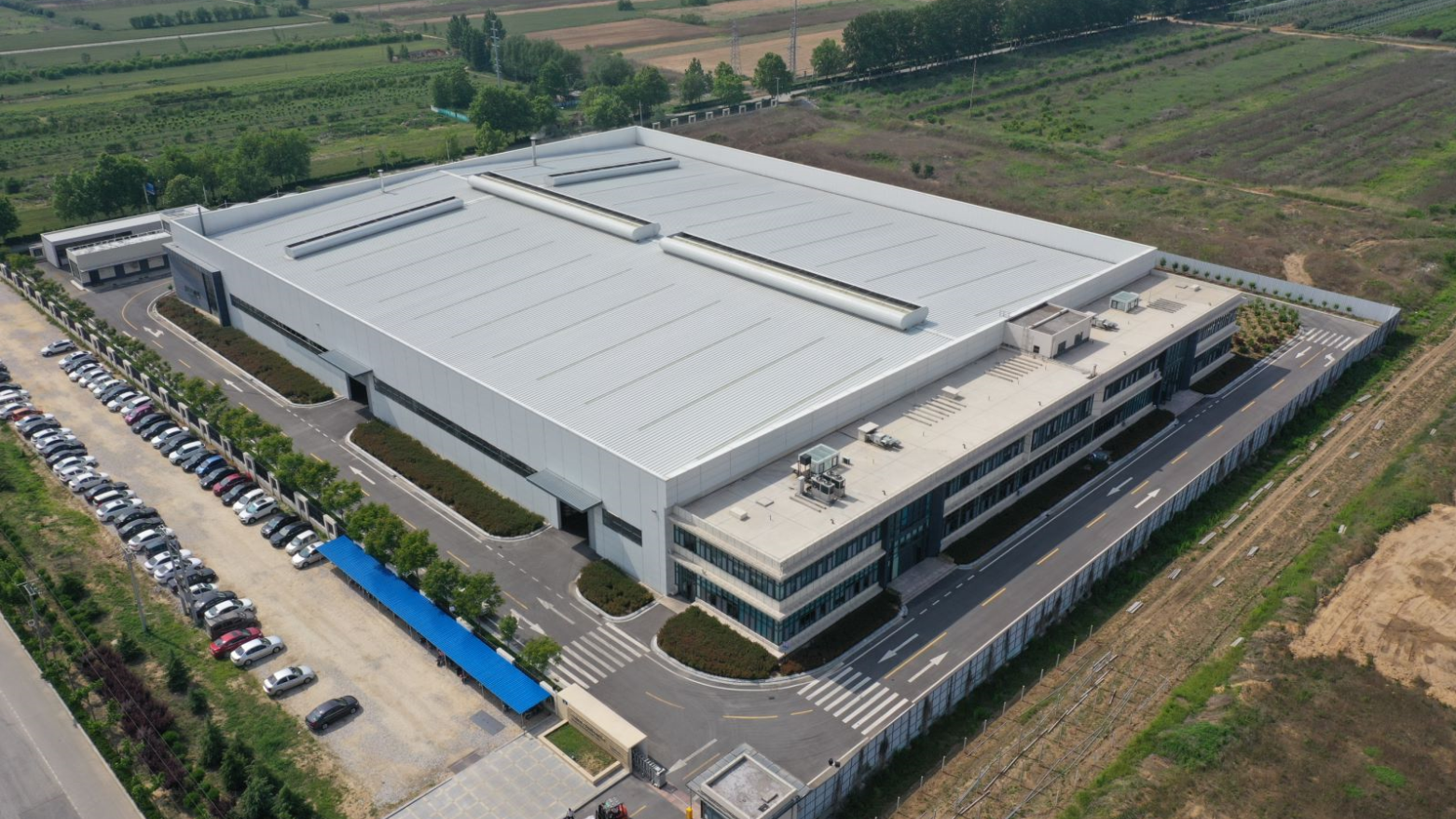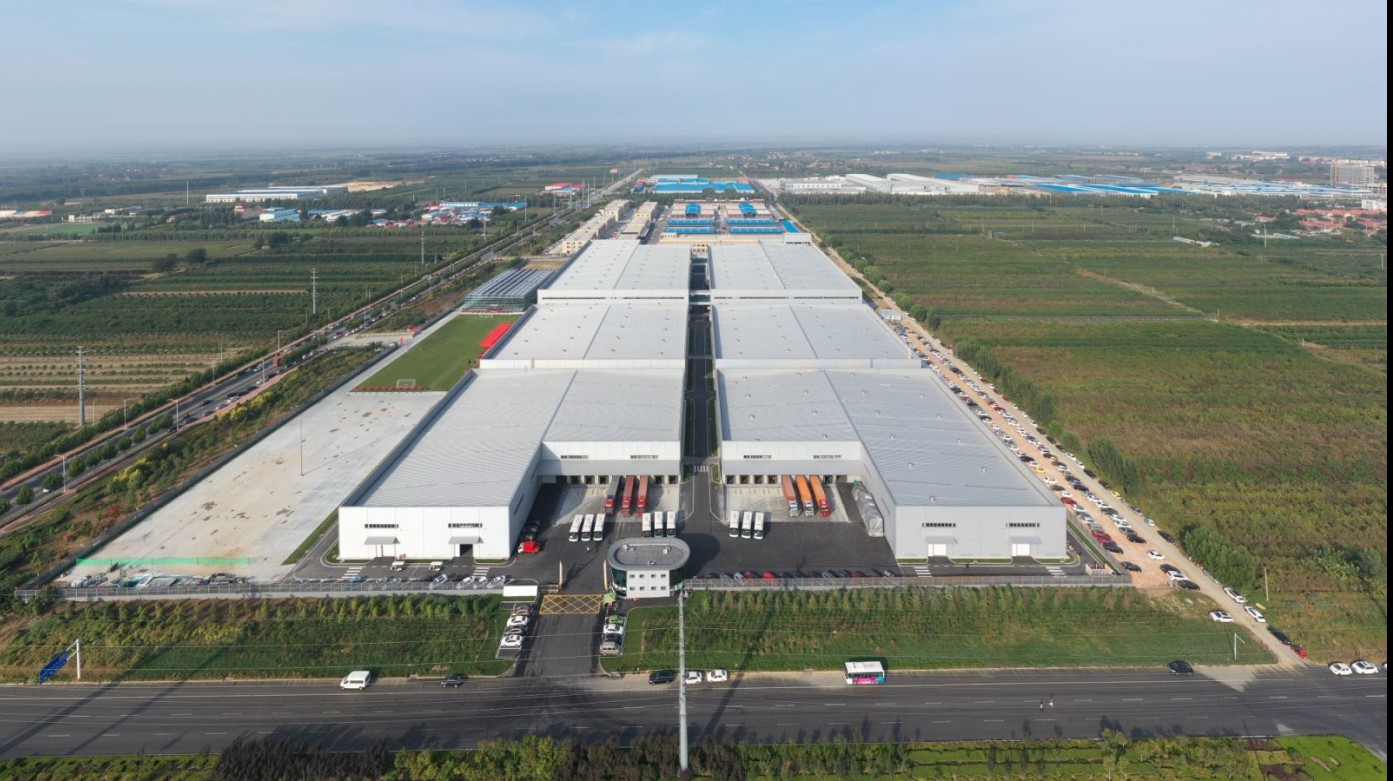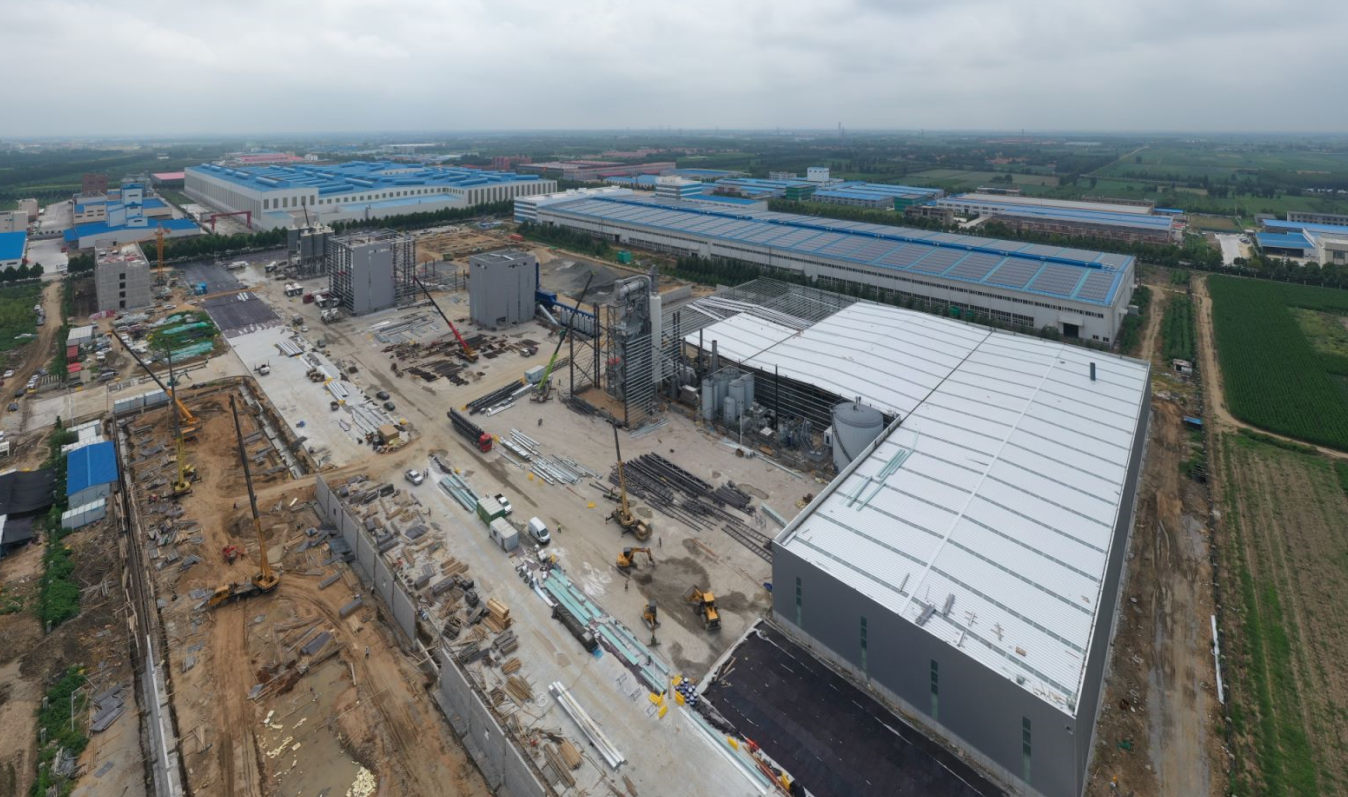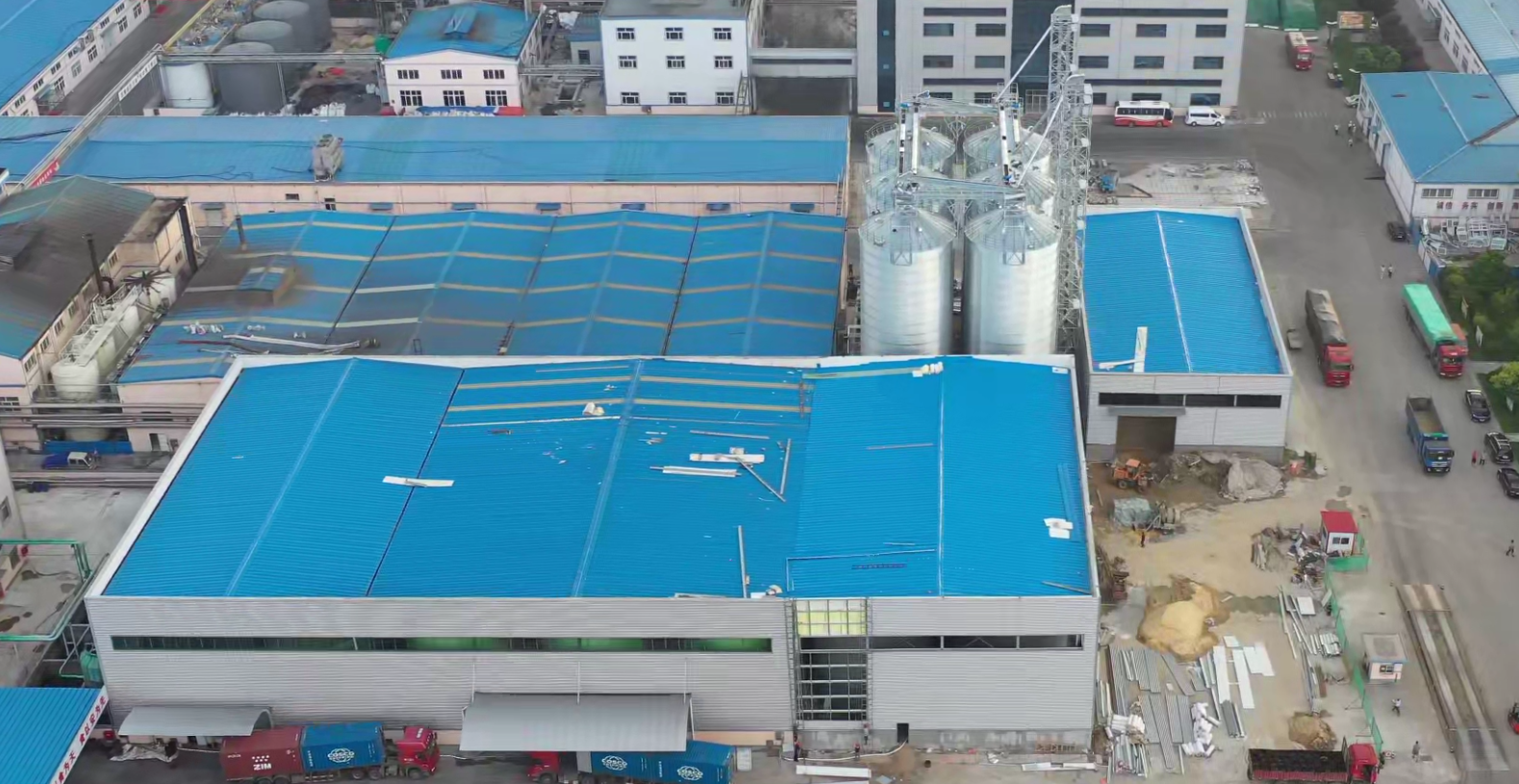PEB assembly for fabrication hall in Congo
The main frame basically includes the rigid steel structures of the building, this rigid steel building composed of tapered columns and tapered rafters. Flanges are connected to webs by means of a continuous fillet weld on one side.
Columns are H section welded steel, transferring the vertical load to the foundations. In pre-engineered buildings, columns are made up of H or I sections which are most economical than others.
Beams, or called rafters are H section welded steel, which is one of a series of sloped structural members from the ridge or hip to the wall-plate, downslope perimeter or eave and that are designed to support the roof deck and its associated loads.
Secondary components are purlins, girts and eave struts used as support to walls and roof cladding panels. Purlins are used on the roof, grits are used on the walls, eave struts are used at the intersection of sidewall and the roof. Purlins and girts are cold formed Z sections with stiffened flanges.
Eave struts are unequal flange cold-formed C sections. Eave struts are 200mm deep with a 104mm wide top flange, 118mm wide bottom flange, both are formed parallel to the roof slope. Each flange has a 24mm stiffened lip.
Cable bracing is a round bar that ensures the stability of building against forces in the longitudinal direction such as wind, cranes and earthquakes. Diagonal bracing in the roof and side walls shall be used.
Wall and roof claddings are single skin sheet or composite sandwich panel for pre-engineered steel buildings. Core material usually used glass wool, rock wool, EPS, polyurethane PU panel.
Accessories are like bolts, turbo ventilators, skylights, lovers, doors and windows, roof curbs and fasteners.
The major application of pre-engineered steel building short as PESB is found in the following
1.Houses & living shelters
2.Production factories and halls
3.Warehouses and sheds
4.Sports stadiums and halls (indoor and outdoor)
5.Aircraft hangers
6.Supermarkets and shops
7.Office buildings
8.Labor camps
9.Temporary construction buildings
10. Schools and classrooms
11. Churches and community centers
Superior Prefabricated Steel Building for Your Demand
YOUR BENEFITS AT A GLANCE
● Free span up to 60 m and various sidewall heights
● Flat or roof pitch of 10° or 22° or multi-roof.
● Aesthetic integration of office rooms to maximize space
● Easy integration of mezzanines, crane bridges, solar panels
● Climate control thanks to different types of insulation sandwich panel
● Short time erection and seismic resistance
● Various solutions to allow natural light inside your building
● Easy relocation, extension and adaptation
The construction of steel structure workshop (also called steel hall) is mainly divided into the following parts:
❶ Embedded parts to stabilize the structure of the complete plant
❷ Columns as primary steel members are generally H section welded steel coating with epoxy or alkyds paint for corrosion resistance
❸ For beams as primary steel members, generally H section welded steel are used. The height of the middle ridge is determined according to the span of the beam.
❹ Purlin as secondary steel members: C-shaped galvanized steel and Z-shaped galvanized steel are generally used.
❺ Supports and braces are usually round steel coating anti-corrosion paint.
❻ Roof and wall cladding system. The first one is a single separate tile (PPGI tile) without insulation layer. The second type is sandwich composite panel. Polyurethane, glass wool, rock wool and EPS are sandwiched between the two layers of color-coated metal sheet to play the role of warming in winter and cooling in summer, and also has the effect of sound insulation and fire prevention.
The main advantages of steel structure workshop are:
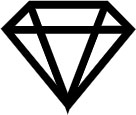
Light weight, high strength and large span:
Although the density of steel is higher than other building materials, its strength is very high. Under the same force, the steel structure has a small dead weight and can be made into a structure with a larger span.

Short construction time:
the structural parts of the plant are mainly produced in the factory and prefabricated, and then installed on the site. The erected work is convenient and the construction is convenient.

High fire resistance:
When the surface temperature of the steel is within 150℃, its strength changes little. When the temperature exceeds 150℃, its strength decreases significantly. Generally, fire retardant coatings are applied to the surface of steel structures to form a protective film to increase the fire resistance limit of the components. Of course, the reasonable division of fire compartments and the use of fire shutters are also very important.

Sound insulation and heat preservation:
Fill the metal roof with sound insulation material (usually glass wool, EPS, rock wool, polyurethane), or add heat insulation reflective paint on the metal tile surface.
Related suggestion
Online consultation
Get in contact to KXD Steel





